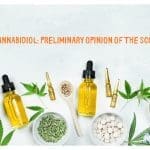
For a cosmetic product; It is the evaluation report made on the finished product in accordance with the 12th article of the Cosmetic Regulation, taking into account the toxicological character, chemical structure and exposure levels of the product components, the specific exposure characteristics of the target audience or the region where the product will be applied.
It can be prepared by a person with a degree in pharmacy or by persons with a certificate issued to those who have completed the theoretical and applied curriculum offered in the field of toxicology or cosmetic product safety assessment with a degree in medicine, dentistry, biology, chemistry, biochemistry, microbiology or equivalent.
In the light of additional information emerging after the product is put on the market; The safety assessment report should be kept up-to-date in any changes to be made in the formula of the product, the sources from which the raw materials are provided or the recommended use.
The Cosmetic Product Safety Report should contain at least the following items:
PART A – Cosmetic Product Safety Information
- Quantitative and qualitative composition of the cosmetic product
The quantitative and qualitative composition of the cosmetic product, including the chemical identity of the cosmetic product (including chemical name, INCI, CAS, EINECS / ELINCS, if applicable) and their intended functions. For perfume and aromatic compositions, a description of the name and code number of the composition and the identity of the supplier.
- Physical / chemical properties and stability of the cosmetic product
Physical and chemical properties of the substance or mixtures as well as the cosmetic product Stability of cosmetic products under reasonable foreseeable storage conditions.
- Microbiological Quality
Microbiological specifications of the substance or mixture and the cosmetic product. Special attention should be paid to cosmetics used around the eyes, in general on mucous membranes, damaged skin, children under three years of age, the elderly and people with risky immune response. Protective screening-challenge test results should be shared.
- Information on impurities, residues, packaging material
Purity of substances and mixtures.Evidence that prohibited substances are technically unavoidable in the presence of trace amounts. Relevant properties of the packaging material, particularly purity and stability.
- Normal and reasonably foreseeable use
Normal and reasonably foreseeable use of the product. The evaluation should be justified, especially in the light of warnings and other explanations on the product label.
- Exposure to cosmetics
Considering Part A (5), exposure information for the cosmetic product:
A) Application place (s),
B) Application surface area (s),
C) Amount of product applied,
D) Duration and frequency of use,
E) Normal and reasonably foreseeable exposure route (s),
F) Targeted (or exposed) populations. Potential exposure of a particular population should also be considered.
Toxicological effects should also be taken into account in exposure calculations (for example, exposure may need to be calculated based on unit area of skin or unit body weight). Possibilities of secondary exposure due to other routes other than the direct route of administration should also be considered (eg involuntary inhalation of sprays, involuntary ingestion / ingestion of lip products, etc.).
The possible effects that may arise as a result of particle size exposure should be particularly taken into account.
- Exposure to the substances in the formula
Information on exposure to substances in the cosmetic product for the relevant toxicological limits, taking into account the information contained in Section A (6). - Toxicological profile of the substances in the formula
The toxicological profile of the substance contained in the cosmetic product for all relevant toxicological limits. Particular attention should be paid to local toxicity assessment (skin and eye irritation), skin sensitivity and photo-induced toxicity in the case of UV absorption.
The safety limit (MoS) calculated on the basis of the highest application amount [NO (A) EL] of the substance without undesirable effects should be considered. Also, all important toxicological profiles of absorption should be evaluated. The reasons for the absence of these factors are stated.
In evaluating the toxicological profile, particular emphasis is placed on any possible effects resulting from:
* particle sizes including nanomaterials,
* impurities of the materials and raw materials used,
* the interaction of these substances with each other.
Comparative evaluations made should be properly justified and justified. The source of the information should be clearly defined.
- Undesirable Effects and Serious Undesirable Effects
All data on undesirable effects and serious undesirable effects related to cosmetic product (s). Statistical data are also included.
- Cosmetic product information
Other relevant information, for example, confirmed and verified findings from current studies with volunteers or risk assessments in other relevant areas.
PART B- Cosmetic Product Safety Assessment
- Evaluation result
Results of the statement and evaluation regarding the safety of the cosmetic product.
- Warnings and instructions for use on the label
Statement regarding the necessity to indicate certain warnings and instructions for use on the label.
- Justification
Explanation of the evaluation result in Part B (1) and the scientific justification that forms the basis of the statements in Part B (2). This statement is based on the explanatory information contained in Part A. If relevant, the safety margins should be evaluated and discussed.
There should be a special assessment of, inter alia, cosmetic products intended for use in children under three years of age and cosmetic products intended for use only for external genital cleansing.
Possible interactions of the ingredients in the cosmetic product should be evaluated.
The absence or absence of different toxicological profiles should be duly justified.
The effects of stability on the safety of the cosmetic product must be properly considered.
- Information about the safety assessment officer and approval of Part B
Name and address of the safety assessor,
Documentation that the safety assessor has a diploma and sufficient experience
Signature and date of the safety assessor.
Product Safety Assessment Report Service is provided by our professional team with the necessary qualifications.
You can contact us.




